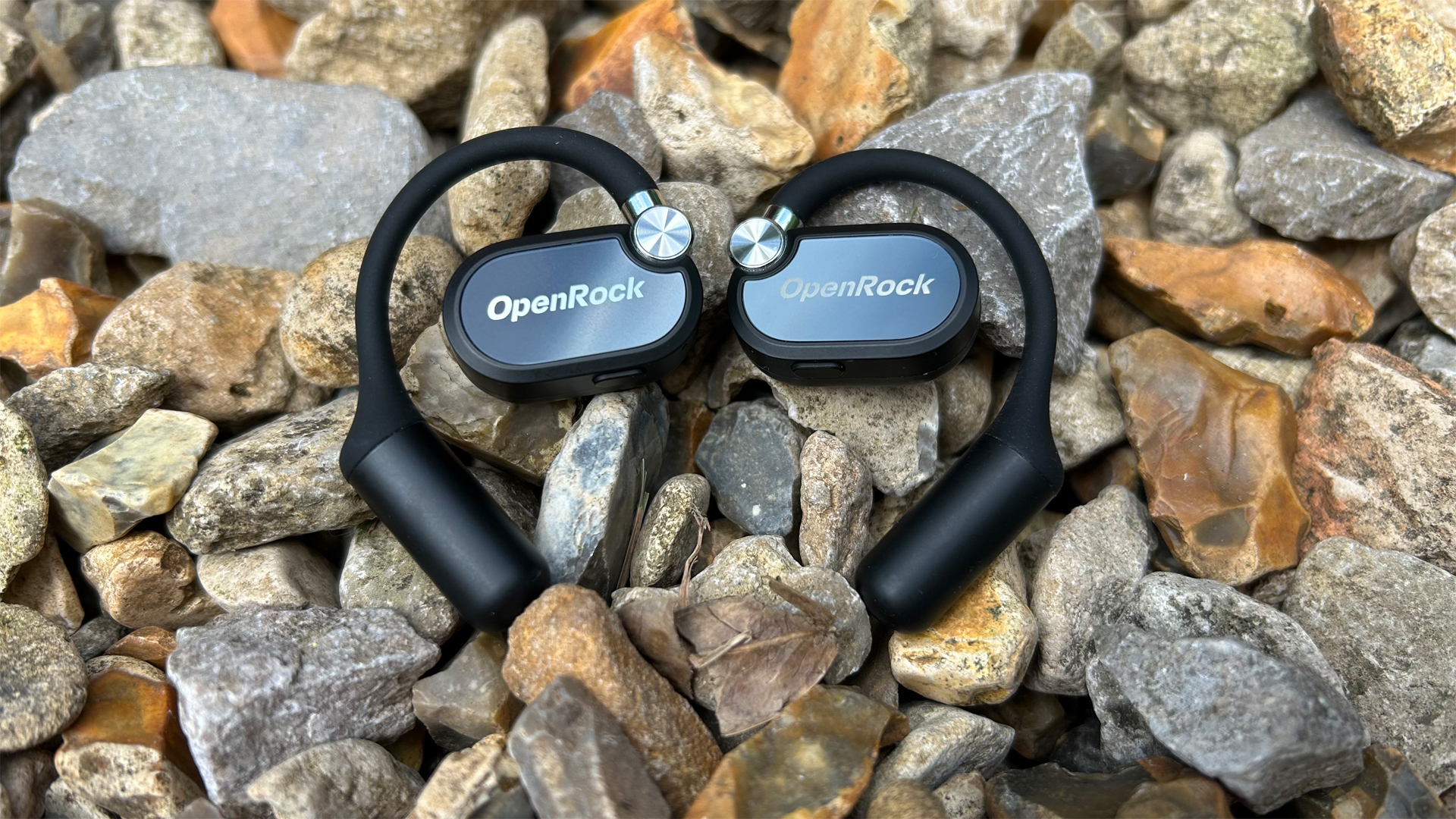Advnture Verdict
If your main reason for wearing bone-conducting headphones is being able to hear ambient sound, these air-conducting alternatives may not be for you. But if you’re looking for portability, impressive sound quality and decent battery life, the OpenRock X could be a decent addition to your running kit. Bear in mind, though, that there are cheaper air-conducting models available.
Pros
- +
Impressive sound quality on music and podcasts
- +
Comfortable
- +
Stay in place while you’re running
- +
Easy-to-use app
- +
Good battery life
- +
Come with a neat metal case for storage and charging
Cons
- -
Frustrating, fiddly controls
- -
Cheaper air-conduction headphones are available
- -
Phone calls not great in the wind
You can trust Advnture
Bone-conducting headphones were a gamechanger for me when running, as I mentioned in my Suunto Sonic headphones review. Too many pairs of Bluetooth running headphones had become casualties to rain, sweat and/or breakage, while I loved the fact they allowed me to hear what was going on around me. I use my Shokz Openrun Pro 2 headphones so frequently that they’re now rather like sunglasses, in that I usually forget I’m wearing them when I walk into a shop or pub.
The OpenRock X should not, however, be confused with bone-conduction headphones. Instead, this is effectively a hybrid between traditional in-ear buds and 'bonephones'. Rather than sitting in front of your ears and transmitting sound to the eardrum via your skull, the speakers in these air-conduction headphones rest over the auditory canal, held in place by small adjustable arms that loop around the back of the ears. And, because they don’t require an alice band-like strap to anchor them to your noggin, they’re small enough to fit in your pocket when not in use.
It’s a neat concept but could air-conduction headphones win over a self-confessed bone-conduction zealot like me?
Design and features
The first time I took the OpenRock X headphones out of the box, it took me a couple of minutes to work out how to wear them. This is my problem rather than theirs, however, because a quick read of the instructions (and looking for the industry standard 'L' and 'R' on the earbuds themselves) would have made this perfectly clear. The arm is attached to the speaker unit by a hinge that rotates around two perpendicular planes, helping you get a snug fit on your ear.
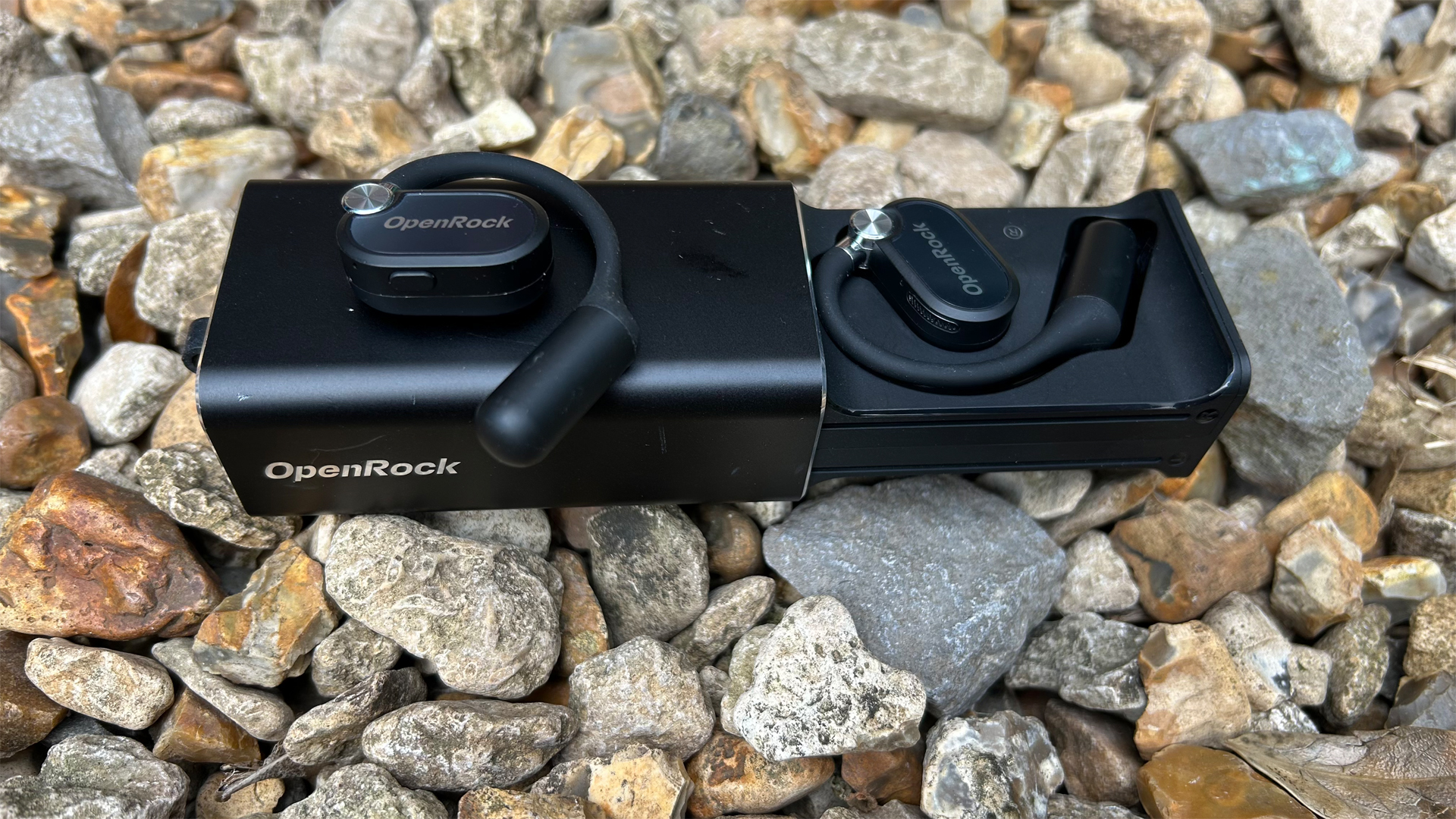
List price: $169.99 (US) / £149.99 (UK)
Weight (2 x ear buds only): 0.8oz / 24g
Weight (in box): 4.5oz / 129g
Battery life (manufacturer specs): 48 hours (with case) / circa 12 hours (without case)
Charging time: 1.5 hours
Connection: Wireless (Bluetooth 5.3, AAC, SBC)
Bluetooth range: 33ft / 10m
Noise cancellation: AI 4-Mic Noise-Can
Colors: Black / White / Orange
Dust and water ingress rating: IPX5
They come in a bespoke carrying case/charging unit, which has a very satisfying slow-release action when you click the drawer open and shut. The case connects to power via the now-ubiquitous USB-C connector (you get another cable in the box to add to your collection), and works as a portable charger when you can’t get to a plug socket, giving you extra listening time when you’re on the go. An LED flips from red to blue when you’re fully powered up.
The OpenRock X headphones have a waterproofing rating of IPX5, which means they should stand up to low-power water jets – or, in outdoor terms, all but the heaviest of rain.
Connectivity and sound
The OpenRock X headphones were a doddle to pair with both my iPhone and my iPad. You can connect them to two devices simultaneously and switch between them fairly seamlessly. The Bluetooth range is good, with no loss of signal when I go downstairs to make a cup of tea.
All the latest inspiration, tips and guides to help you plan your next Advnture!
To be fair, that’s the minimum I’d expect from any set of Bluetooth headphones or speakers. The sound quality, however, proved to be a really pleasant surprise.
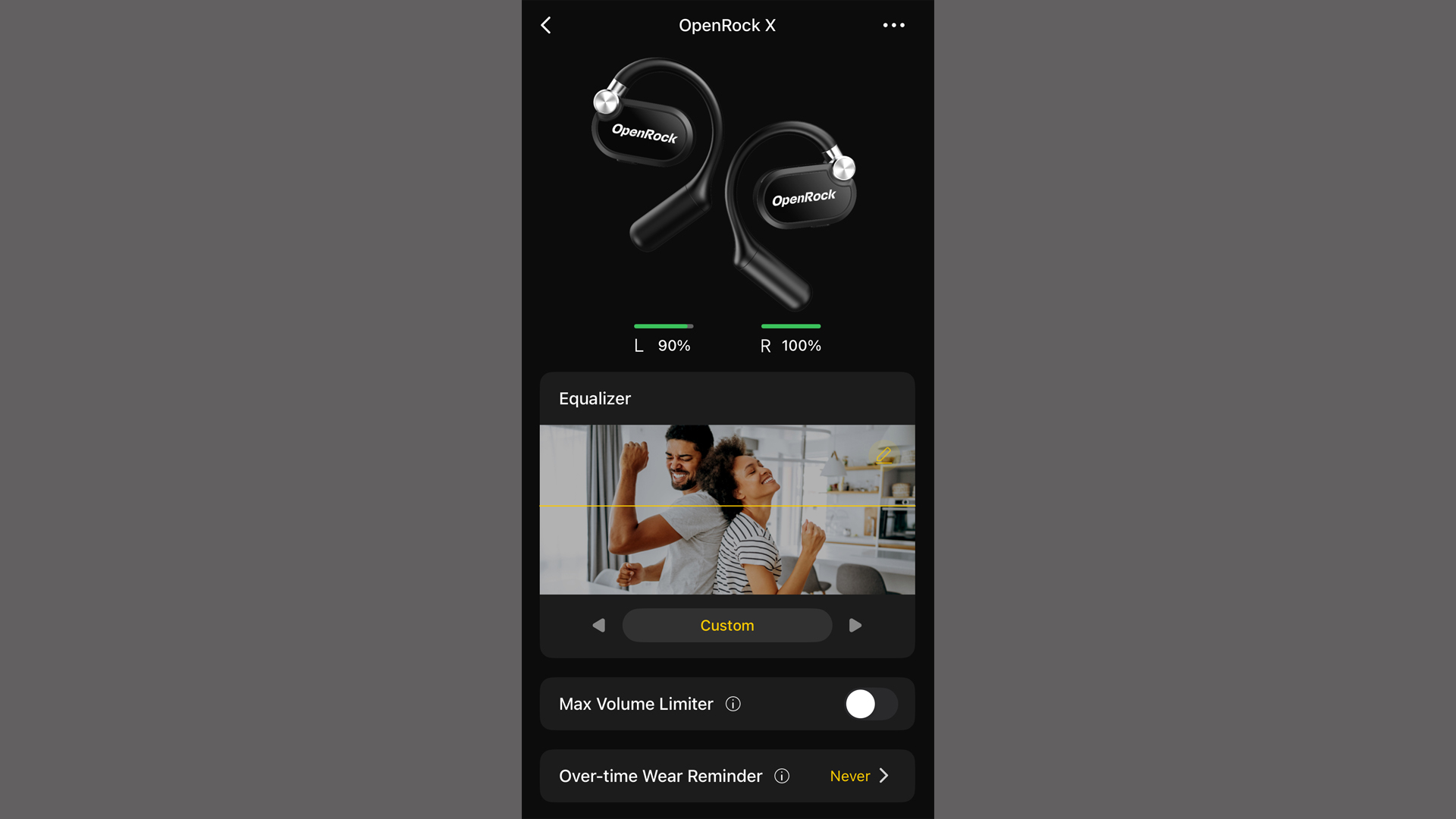

With bone-conducting headphones you accept that you may have to sacrifice a bit of clarity and bass to enjoy their many other benefits. That’s certainly not the case with the OpenRock Xs, whose 14.2mm dynamic drivers impressed me from the very first bar of music I played. Songs sound good across the frequency range, and don’t distort at higher volumes. They also do a decent job on podcasts, my usual running companion of choice.
Operation
You control the OpenRock X headphones by means of a small button on each of the respective earbuds – more on that in the 'On the trails' section below. For more sophisticated settings you need the app, which I’ve found incredibly easy to use.
As well as allowing you to update the firmware on your earbuds, the app gives you plenty of ways to optimise your listening experience: you can adjust the left/right balance, turn on spatial sound, limit the maximum volume, and choose between three preset listening modes (Rock, Relax, Boom). You can also create your own bespoke sound profile.
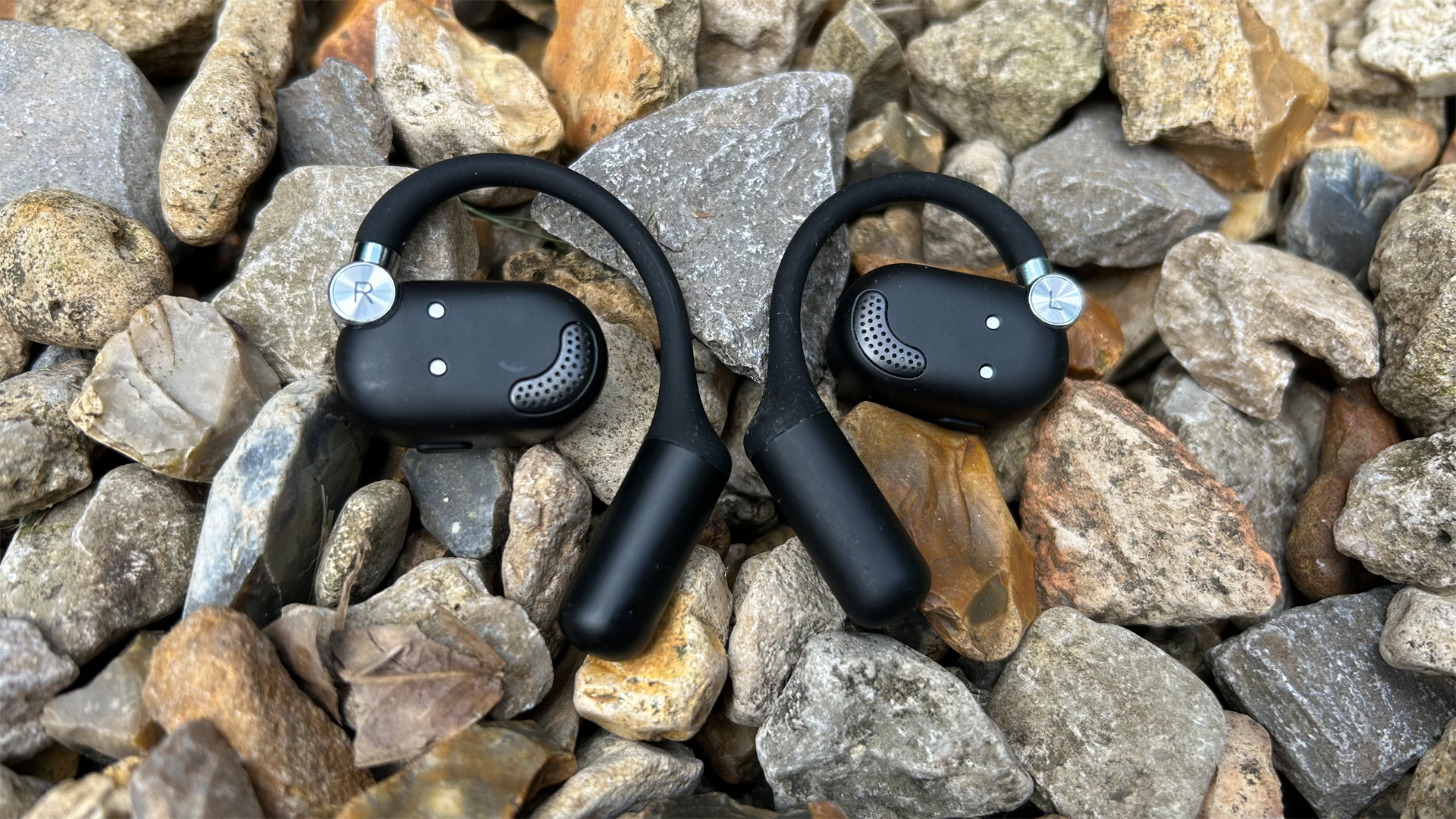
Other handy app features include individual battery levels for the carrying case and the respective earbuds; auto power-off; and a 'find my…' function that prompts your headphones to make a VERY LOUD noise if they ever go AWOL. There’s also an in-built product manual just in case, like me, you’ve struggled to work out how to wear the things.
On the trails
The OpenRock Xs have accompanied me on many runs on road (mostly around Bath) and trails (rural Staffordshire, Cornwall), as well as walking around town and sitting on public transport.
In fact, it’s on buses and trains that you really hear their benefits over bone-conducting headphones, as air-conduction models shut out more of the inevitable engine-based racket – particularly if you take advantage the Boom mode, which is specifically designed to punch through background noise.
That said, the listening experience still isn’t great in strong winds, especially when making phone calls – despite OpenRock’s claims that the AI-driven, 4-microphone noise-cancelling tech will 'wipe out background sounds for clear voice pick-up, even in strong winds'. (This is an extremely minor criticism, seeing as making phone calls in the wind is a long way down my list of priorities – with or without headphones.)
The OpenRock Xs’ adjustable arms give enough freedom of movement to find a snug fit around your ears, while also offering enough resistance to keep them firmly in place. I’ve rarely felt they’re going to fall off, which is a massive advantage over many smaller, in-ear buds on the market. I’ll admit I haven’t explored the limits of the IPX5 rating in extremely wet conditions, as that’s a test you only get to fail once.
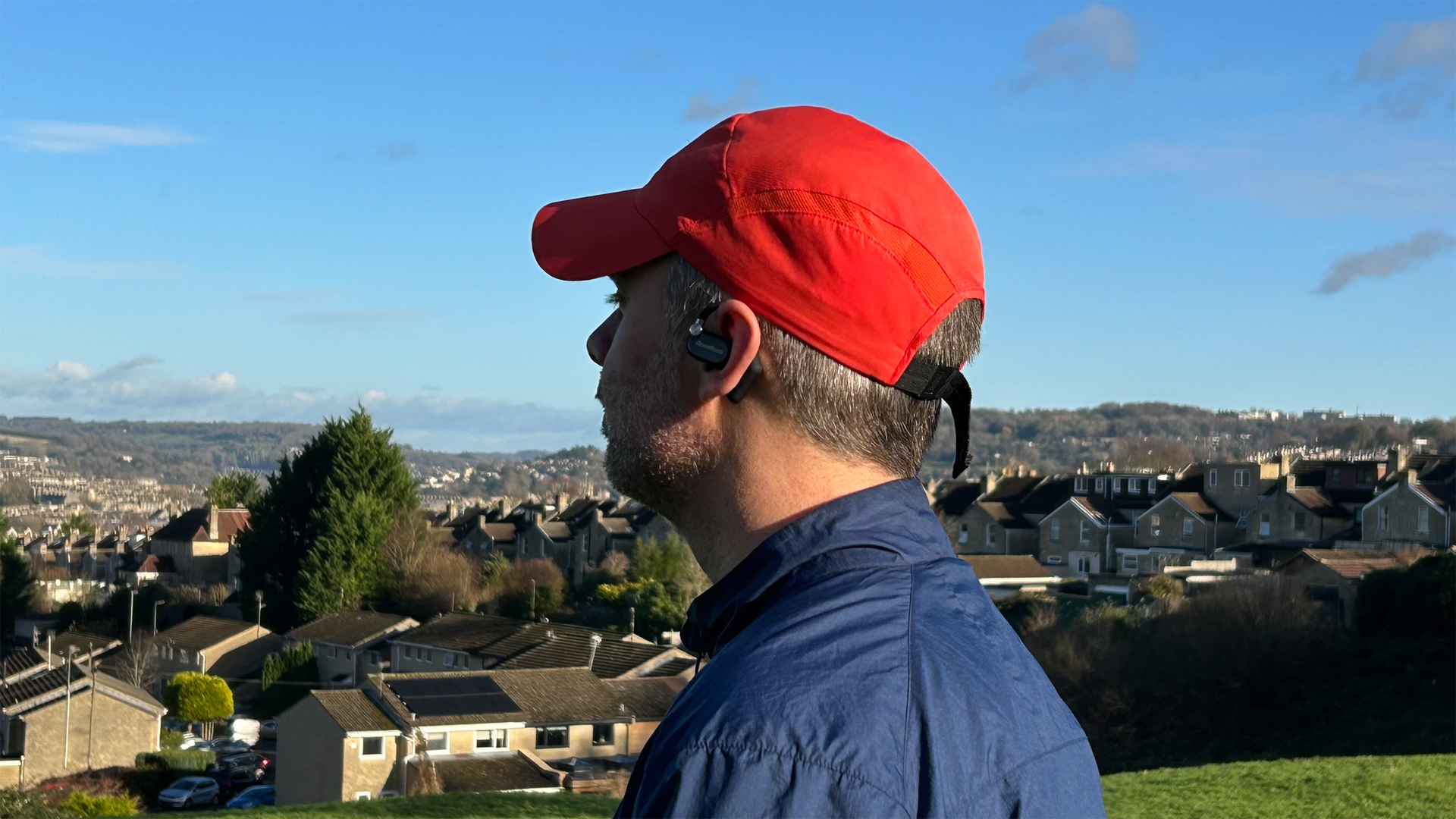
While I think you’d need to adhere to some very strict conditions to meet the manufacturer’s battery life claims, I’ve been impressed by the headphones’ longevity. A full charge will see the earbuds through several long runs, while the charging case gives you the freedom to go away for a few days without sacrificing a USB port in a power bank.
There is one thing about the OpenRock X headphones, however, that I’ve literally never got to grips with. The controls are an absolute pain to use when you’re out on the trails, with the two tiny buttons proving totally inadequate. Aside from being fiddly to find and press, the fact that the buttons are used to play/pause (a single quick tap), skip tracks (two or three taps to go forward and back, respectively), and adjust the volume (a long press on the left to go down, a long press on the right to go up) is incredibly frustrating. I’ve lost count of the number of times I’ve tried to make a podcast episode louder, been taken to a completely different podcast, and had to pause my run to get back to where I was. Controls can’t really be considered intuitive if you have to think before you press.
Generally, though, the OpenRock X headphones are an impressive piece of kit. They’re pricier than some other ear-conduction headphones on the market but there’s no question their impressive battery life and sound quality delivers on the trails. And while I’m not sure I’d swap my Shokz bone-conduction headphones for these air-conduction cousins, they’re a good alternative– especially if you want something that will fit in your pocket, or to use when taking the train or bus to your next adventure.
- The best trail-running shoes will put an extra spring in your step
- Find the best running shorts for hitting hills and tackling trails
Also consider

If you’re looking for the open-ear style of the OpenRock X but at a lower price point, the Tozo OpenEgo headphones are a good budget option. They’re less waterproof than the OpenRock X and require a pair of stabilizers (supplied) to keep them in one place while you’re running, but the battery life and sound are impressive. It’s worth noting, however, that we had very similar issues with the OpenEgo’s controls as we did with the OpenRock X’s.
Pros
- Excellent audio quality
- Microphone works well when making calls
- Comes with stabilizers
- Great price
- Easy one-step pairing with Bluetooth 5.3 tech
- Long battery life
- Compact storage/recharging box
Cons
- Requires addition of stabilizers (included) to avoid bouncing
- Less waterproof than some models
- Smart Touch operating system is temperamental
- Audio impacted by headwinds
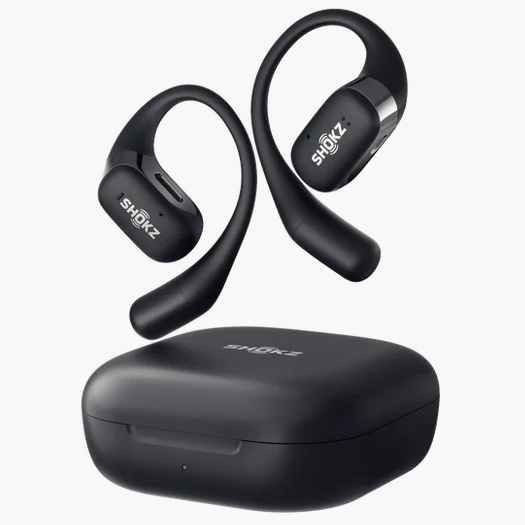
Shokz, one of the pioneers of bone-conducting headphones, branches out into the true wireless space with these OpenFit headphones. Their Ingress rating is IP54, so the water resistance isn’t quite as high as the OpenRock X, but they’re also lab-tested to be dustproof and have a double-layer waterproof steel mesh and gauze for additional protection. They look great, the sound quality is excellent, and they’re much lighter than the OpenRock X, but they don’t have quite as a long a battery life.
Pros
- Much lighter than OpenRun Pro headset at 8.3g each
- Rich, detailed sound
- Excellent bass
- Long battery life supplemented by charging case
- Customizable through mobile app
Cons
- Blocks more ambient sound than OpenRun Pro
- More expensive than other Shokz headphones
Headphones | OpenRock X | Tozo OpenEgo | Shokz OpenFit |
|---|---|---|---|
List Price | $169.99 / £149.99 | $50 / £52 | $180 / £179 |
Weight | 24g (earpieces only x 2) | 25g (earpieces only x2) | 17g (earpieces only x2) |
Battery Life | 48 hours (with case) / circa 12 hours (without case) | 30 hours (with case) / circa 8 hours (without case) | 28 hours (with case) / circa 7 hours (without case) |
In a previous life, Richard spent over a decade on market-leading sci-fi/fantasy magazine SFX, where he talked movies, TV and books with some of the biggest names in the genre. Having swapped Star Wars and Star Trek for the great outdoors, he's worked on Advnture since it launched in July 2020, and looks after the day-to-day running of the site.
